How To Experience The Best Costa Rica Volcanoes: Arenal, Poas, Rincon De La Vieja, Irazu, And Turrialba

Last updated on November 7th, 2023 at 02:57 pm GMT-6 (Costa Rica time)

Written by Nikki Solano
Nikki is the CEO of Pura Vida! eh? Inc. (Costa Rica Discounts), and the author of the guidebooks Moon Costa Rica (2019, 2021, 2023, and 2025 editions) and Moon Best of Costa Rica (2022 edition) from Moon Travel Guides. Together with her Costa Rican husband, Ricky, she operates the Costa Rica Travel Blog, created the online community DIY Costa Rica, built the Costa Rica Destination Tool, oversees the brand-new (summer 2023) Costa Rica Travel Shop, and designed the Costa Rica Trip Planning 101 E-Course. Also, Nikki wrote the Costa Rica cover feature for Wanderlust Magazine's sustainability-focused Travel Green List issue, showcased Costa Rica destinations and experiences on Rick Steves' Monday Night Travel show and podcast/radio show, and served as the Costa Rica Destination Editor for Essentialist, a luxury travel brand. Want to show your appreciation for her free article below? Thank Nikki here. ❤️️
Want to know our pick for the BEST VOLCANO TO VISIT in Costa Rica?
It is featured on DIY Costa Rica!
Want to save money in Costa Rica?
Our sister site, Pura Vida! eh? Inc., has volcano tour discounts. Con mucho gusto (you’re welcome) and pura vida!
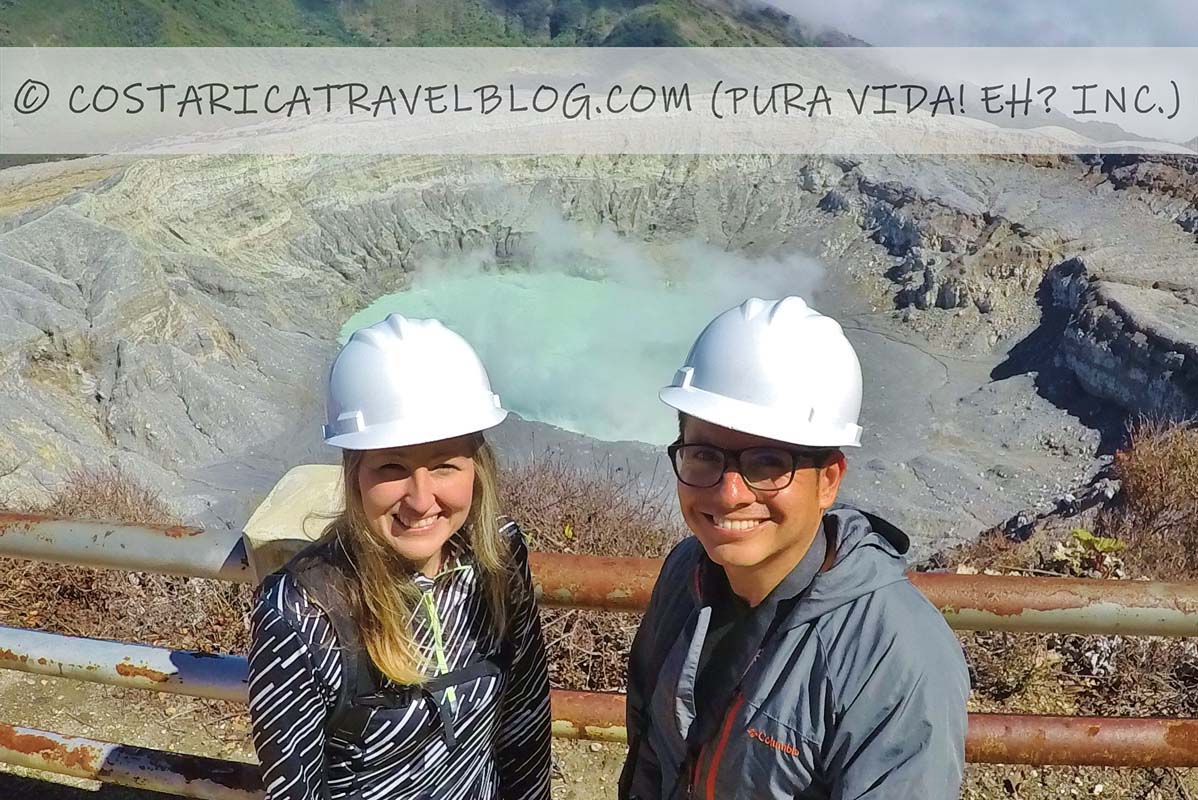

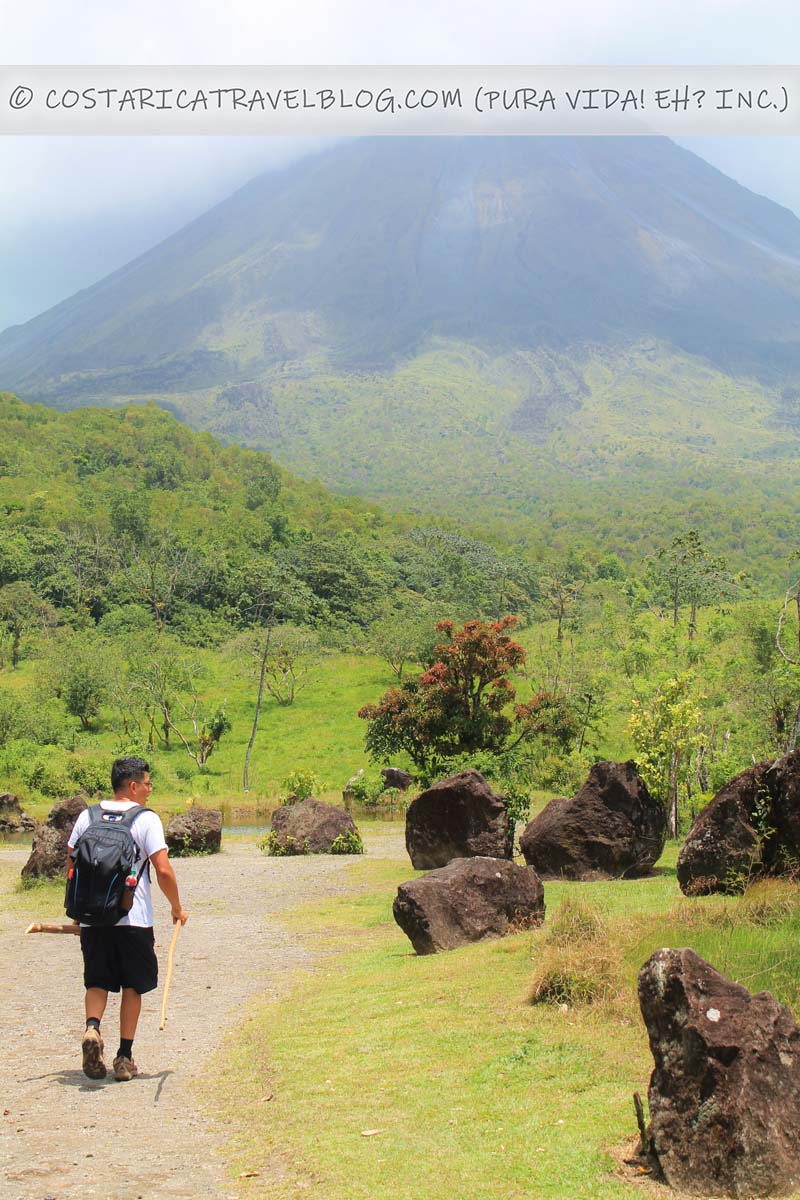
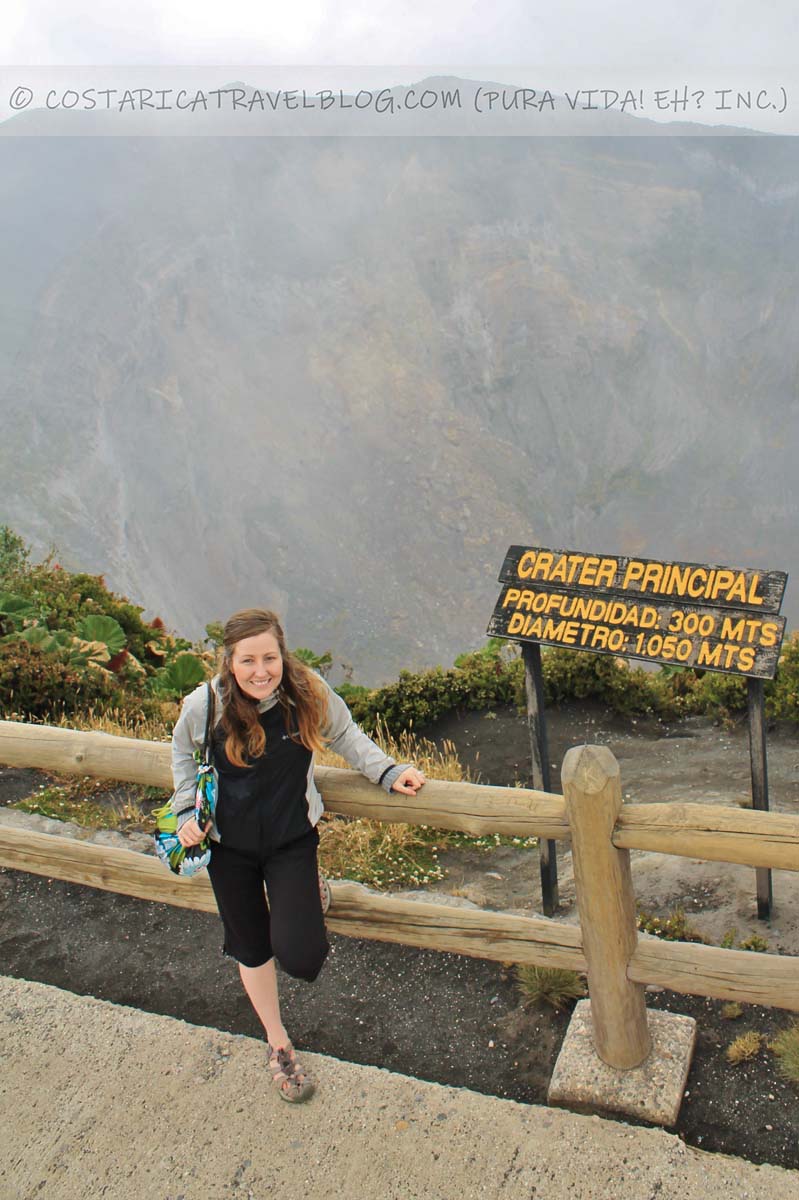

Get the Costa Rica info you need by browsing our article's TABLE OF CONTENTS:
- Costa Rica’s active volcanoes: Know this first
- Costa Rica volcano national parks
- Map of Volcanoes in Costa Rica
- Costa Rica Volcanoes: The Arenal Volcano
- Costa Rica Volcanoes: The Poas Volcano
- Costa Rica Volcanoes: The Rincon de la Vieja Volcano
- Costa Rica Volcanoes: The Irazu Volcano
- Costa Rica Volcanoes: The Turrialba Volcano
- Which Costa Rica volcano is the best to visit?
Costa Rica’s active volcanoes: Know this first
First things first: rugged Costa Rica is ridden with volcanoes. Most don’t take the iconic shape of a cone, and none spew red-hot lava, so unsurprisingly, the majority are mistaken for mountains.
Even if you don’t realize it at the time, no matter where you travel in Costa Rica, you’ll likely drive around or be within eyeshot of a volcano during your trip. This anticlimactic experience probably isn’t enough to wow you, but don’t fret; there are Costa Rica volcano experiences that will. Continue reading below to learn about these experiences, specifically, ways to discover Costa Rica’s top five volcanoes—Arenal, Poas, Rincon de la Vieja, Irazu, and Turrialba—each of which is currently active.
Costa Rica volcano national parks
Each of the five Costa Rica volcanoes detailed below is located inside its eponymous national park: the Arenal Volcano National Park, the Poas Volcano National Park, the Rincon de la Vieja National Park, the Irazu Volcano National Park, and the Turrialba Volcano National Park. Each national park welcomes visitors, although the Turrialba Volcano National Park is often closed due to volcanic activity (see below for details). One of the national parks, the Poas Volcano National Park, requires visitors to have a reservation. While participation in volcano tours that take place at the various national parks is encouraged, some activities inside the parks (including hikes to the craters of the Arenal Volcano and the Rincon de la Vieja Volcano) are prohibited.
Without further ado, here’s what you should know about Costa Rica’s top five active volcanoes: the Arenal Volcano, the Poas Volcano, the Rincon De La Vieja Volcano, the Irazu Volcano, and the Turrialba Volcano.
Map of Volcanoes in Costa Rica
We created the above map to showcase where each active Costa Rica volcano is located. Included on the map are the following sites (each of which we detail in this blog post):
- Arenal Volcano (marked by a mountain icon)
- Irazu Volcano (marked by a mountain icon)
- Poas Volcano (marked by a mountain icon)
- Rincon de la Vieja Volcano (marked by a mountain icon)
- Turrialba Volcano (marked by a mountain icon)
Costa Rica Volcanoes: The Arenal Volcano

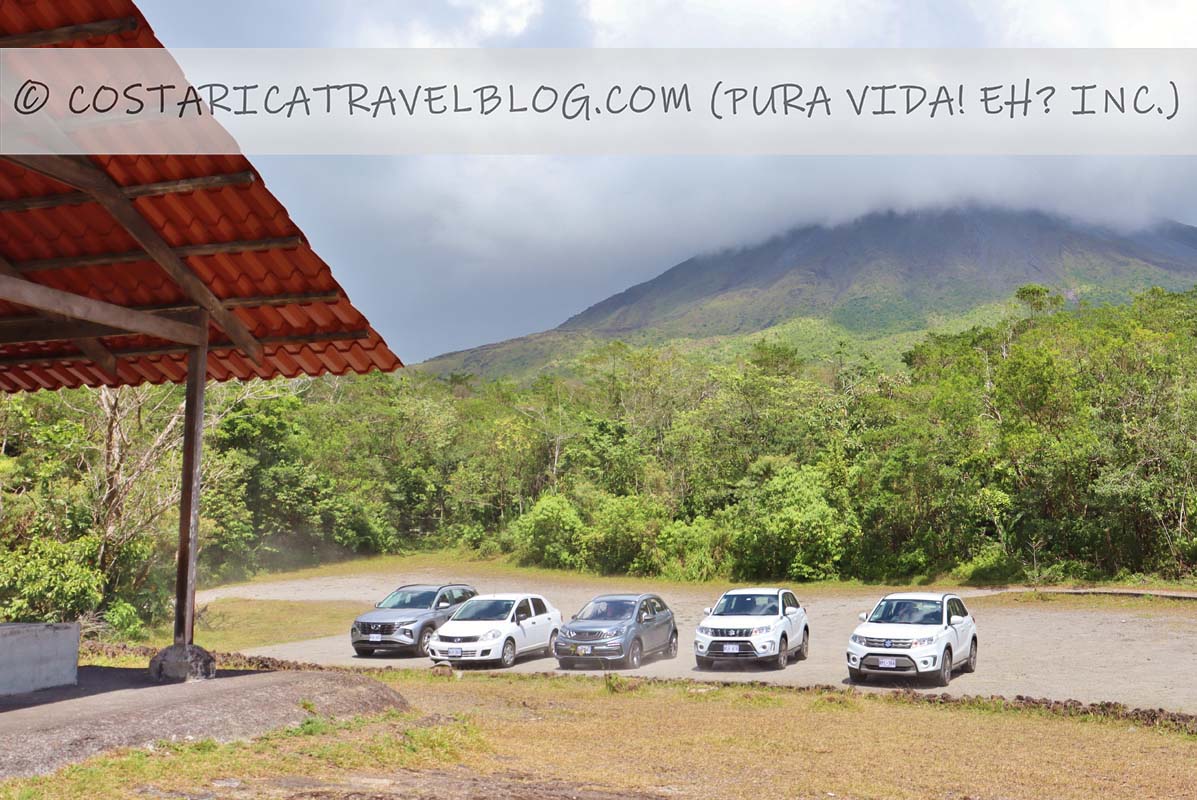
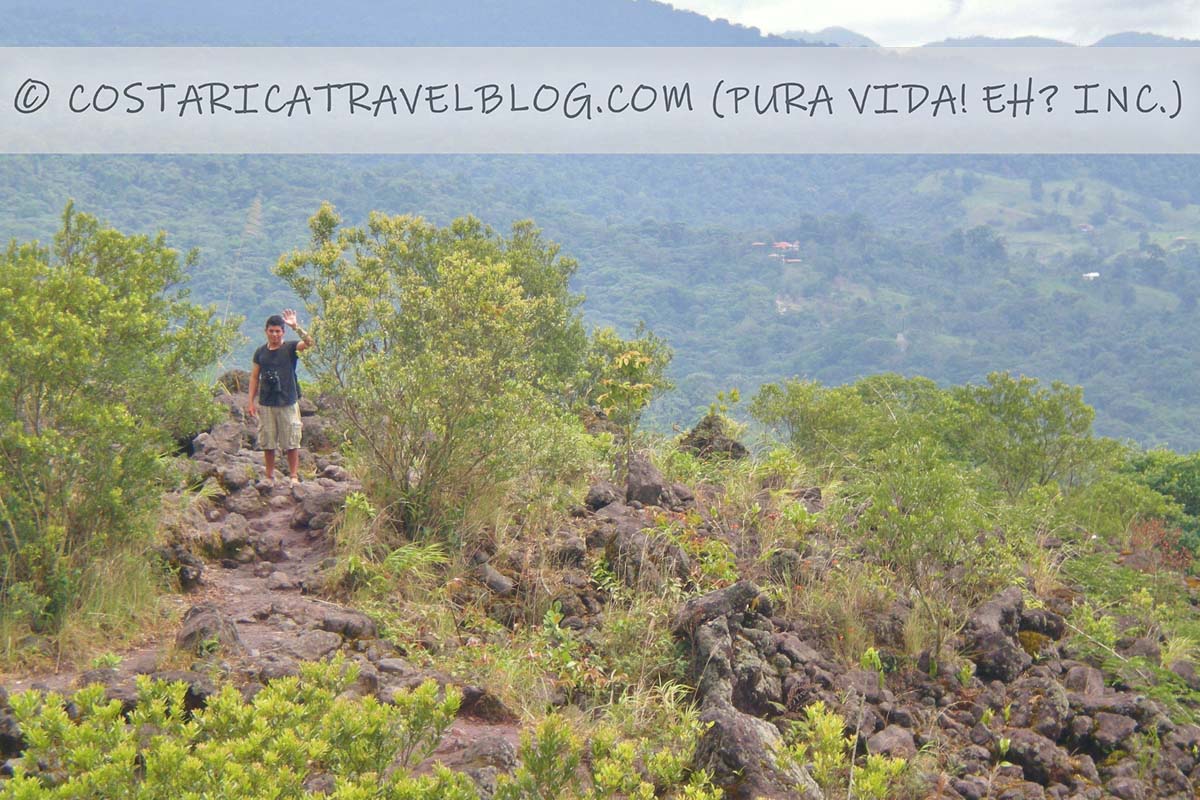

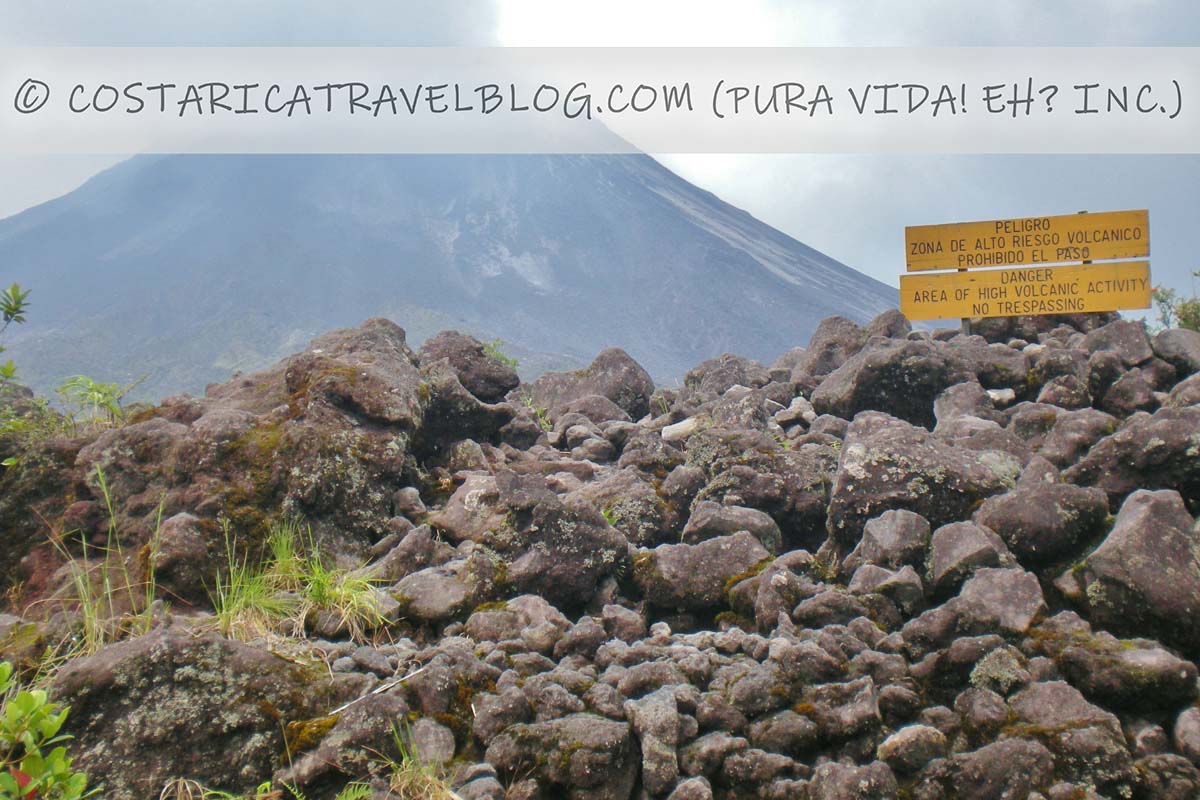
Ways to experience the Arenal Volcano
For our full article about the Arenal Volcano National Park, don’t miss our related blog post:
Why You Should (And Shouldn’t) Visit The Arenal Volcano National Park
The most visited and recognizable Costa Rica volcano is the Arenal Volcano. Though we were lucky enough to spend several years living at the base of this volcano back when it used to erupt on the regular (see our blog post Why You Should (And Shouldn’t) Visit The Arenal Volcano National Park for an account of what that was like), nowadays, only faint puffs of smoke escape its crater. Smack dab in the heart of Costa Rica’s epicenter of adventure (the town of La Fortuna; see our blog post Must-Know Info About La Fortuna Costa Rica From Longtime Residents for our La Fortuna city guide), the Arenal Volcano is the showstopping centerpiece atop the table of Costa Rica tourism. It’s also the best Costa Rica volcano to visit if you want to see and/or snap photos of an iconic, cone-shaped volcano. Though the most straightforward way to experience this particular Costa Rica volcano is to hike around its national park, there are actually countless ways you can experience the Arenal Volcano during time spent in touristy La Fortuna. Here are a few suggestions.
You can view the Arenal Volcano at a distance while:
- Zip-lining
- Touring hanging bridges
- Riding an aerial tram
- Soaking in hot springs
- Horseback riding
- Bird-watching
- Mountain biking
- Riding an ATV
- Kayaking or stand-up paddling on Arenal Lake
- Strolling around downtown La Fortuna
- Staying at an accommodation in the La Fortuna/Arenal area that provides volcano views
- Crossing Arenal Lake (coming to or from Monteverde)
You can hike trails around the foothills of the Arenal Volcano at:
- the Arenal Volcano National Park
- Arenal 1968
- El Silencio Mirador y Senderos
- The Arenal Observatory Lodge
You can combine a guided volcano tour (i.e., a hiking tour around the foothills of the volcano) with the following guided experiences:
- Waterfall visits
- Hot spring visits
- Zip-line tours
- Hanging bridge tours
- Horseback riding tours
- Mountain biking tours
- Safari float tours
What’s not permitted at the Arenal Volcano
Apart from the inclined trails that you’re welcome to hike around the volcano’s base, hikes on other trails that lead up the steep slopes of the Arenal Volcano are strictly prohibited. This means that it is not possible to arrive at and/or see the crater of the Arenal Volcano.
A rundown of the Arenal Volcano National Park
- Experience type provided: volcano visit, educational walking/hiking tour
- Location: west of downtown La Fortuna, on the road to the community of El Castillo
- Sectors that are open to the public: two; the Main Sector and the Arenal Peninsula Sector
- Operating hours: 8:00am to 4:00pm daily
- Visit recommended for: individuals of all ages
- Parking: free parking on-site
- Bathrooms: free bathrooms on-site
- Degree of physicality required to visit: low to moderate, depending on the trails that are hiked
- Wheelchair access/suitable for the mobility impaired: no, but there’s a volcano viewpoint that can be accessed by car (no hike required)
- On-site attractions: great bird-watching, multiple volcano viewpoints, Arenal Lake viewpoints, an observation tower, an opportunity to climb over lava rocks, an opportunity to view a giant Ceiba tree
The average Arenal Volcano experience:
Since it isn’t possible to reach the crater of the Arenal Volcano, most Arenal Volcano tours stick to the volcano’s foothills where flat and hilly trails weave through forest and decades-old lava rocks roughen the landscape.
Costa Rica Volcanoes: The Poas Volcano
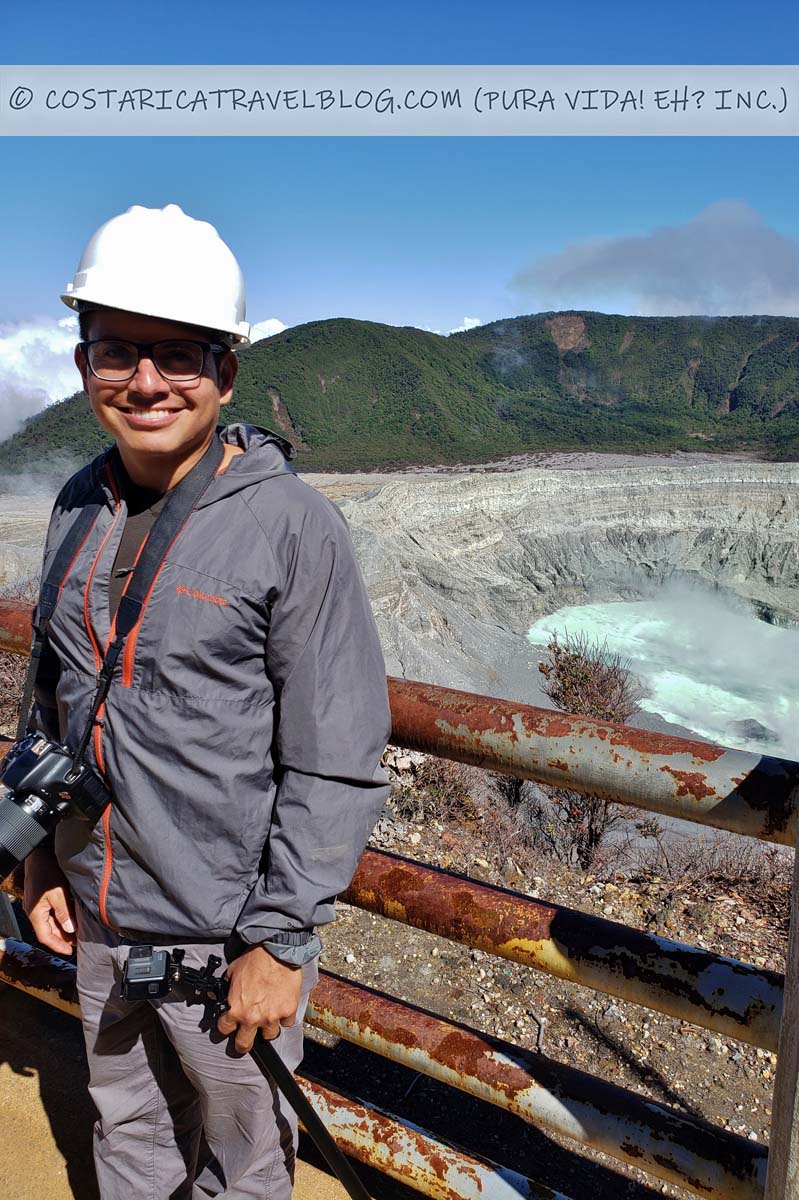
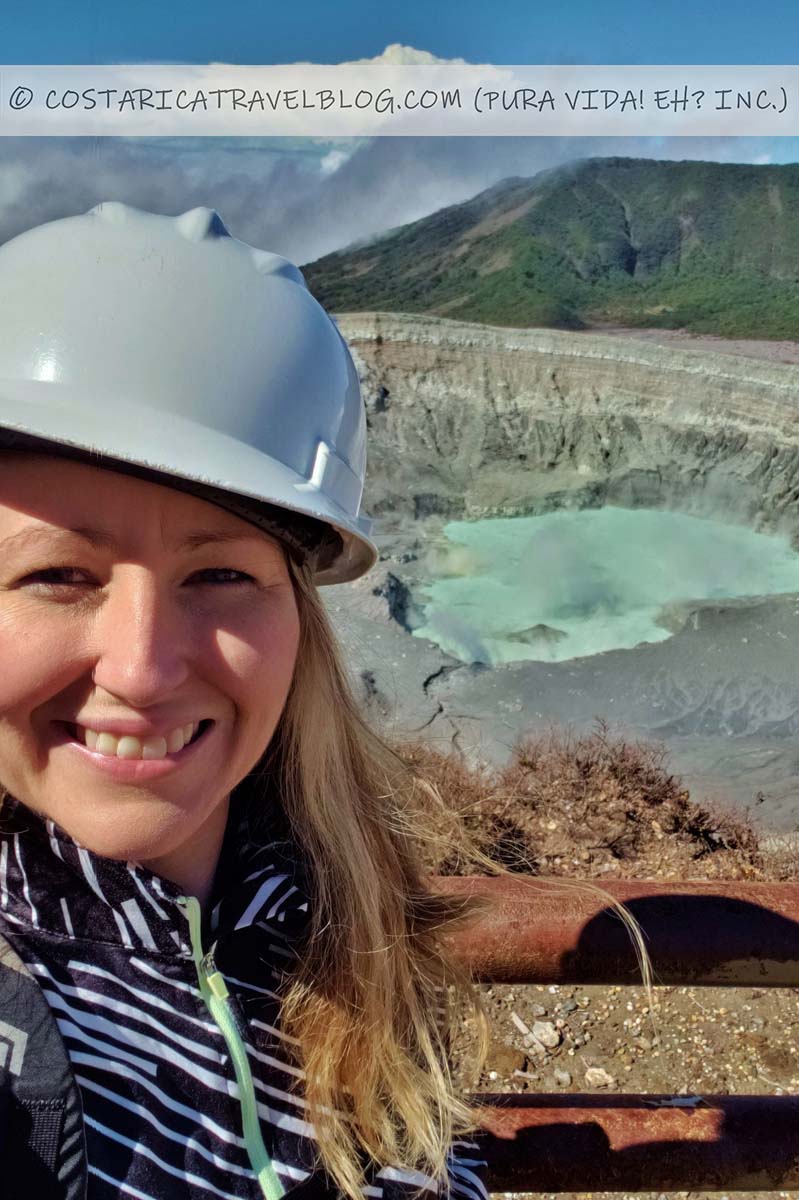
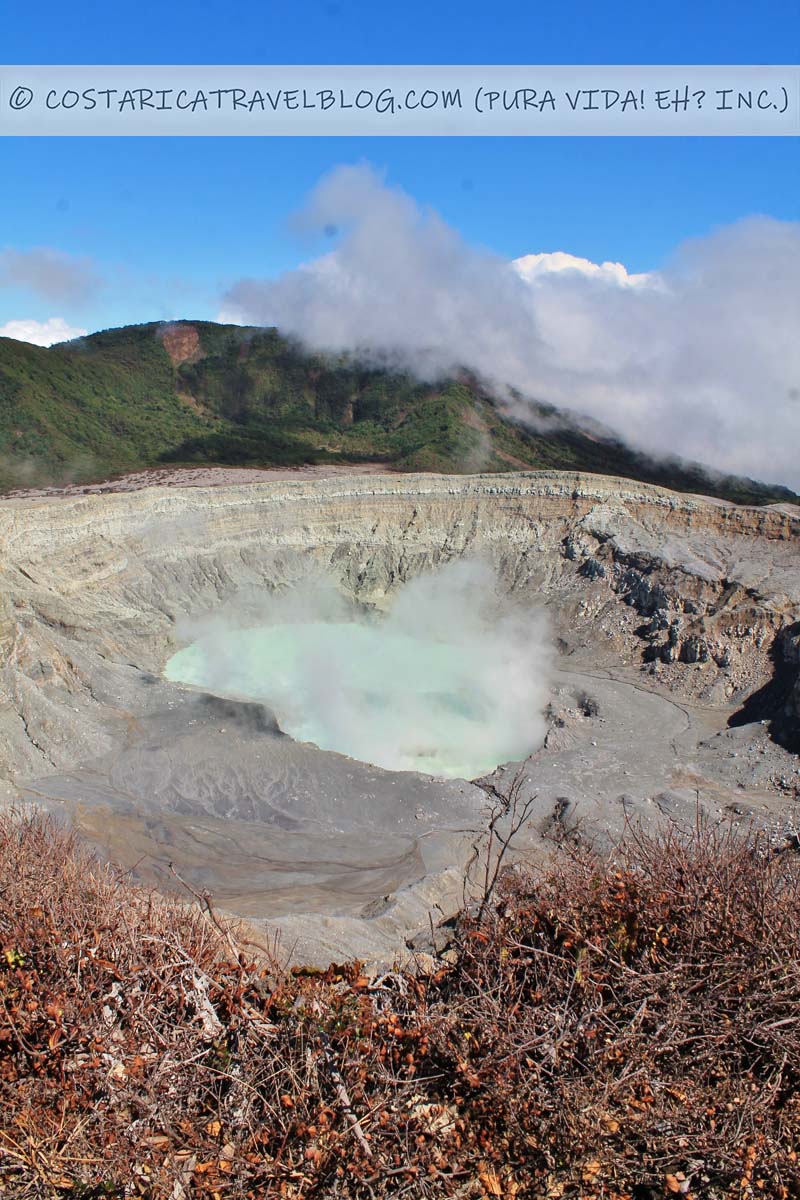
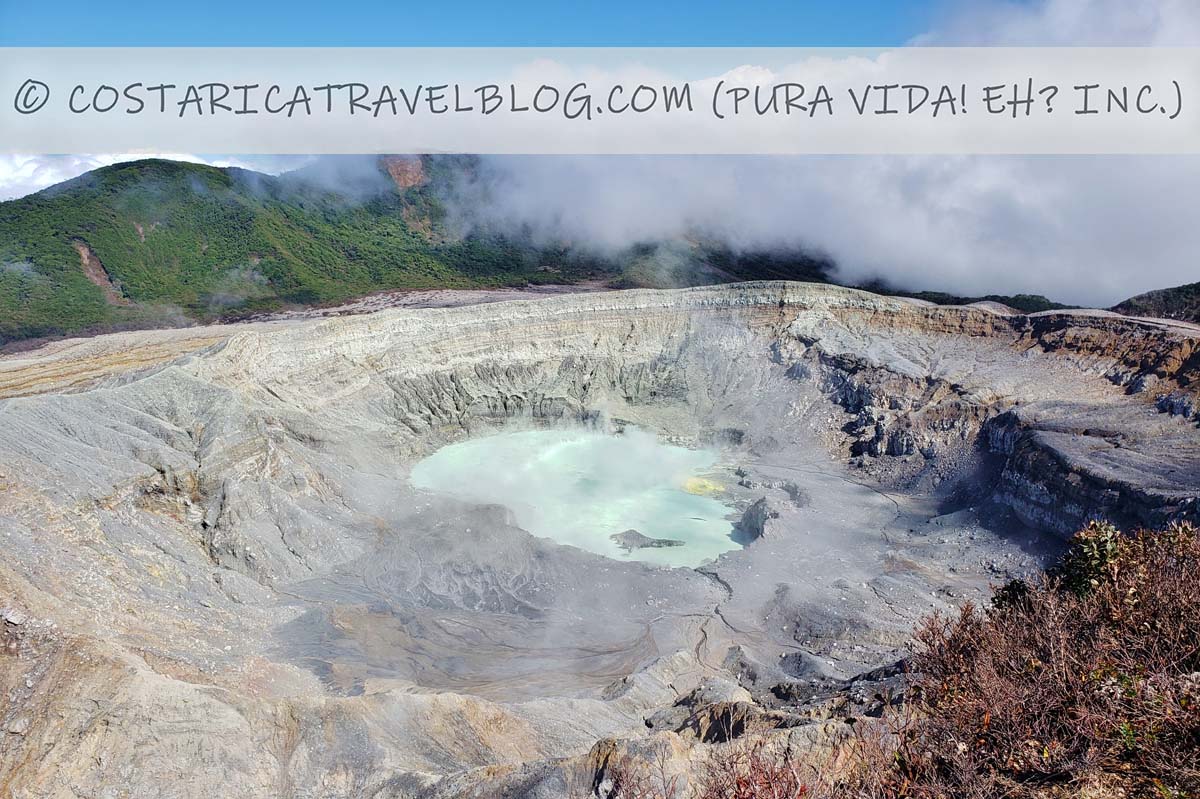

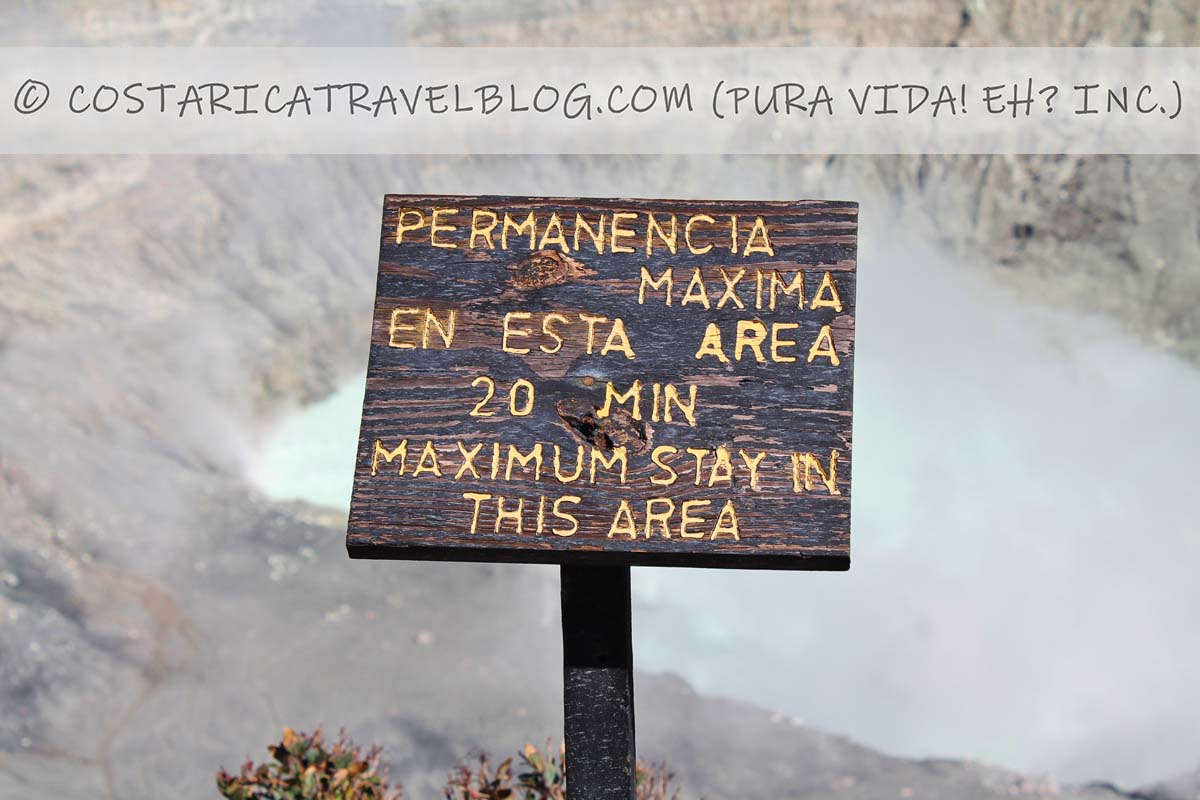
For information about planning a visit to the Poas Volcano National Park, don’t miss our related blog post:
Ways to experience the Poas Volcano
The Poas Volcano has long been one of the most popular Costa Rica volcanoes to visit, thanks in part to its proximity to the Juan Santamaria International Airport (SJO) (a one-hour drive). What makes visits to this particular volcano tricky to coordinate, though, is the fact that reservations for the date and exact time you plan to visit are required (see our related blog post How To Reserve The Poas Volcano National Park (Screenshots) for information about the reservations process). If you aren’t opposed to following the reservation process and committing to an exact date and time for your visit, you’ll be able to experience the one and only way to currently visit the Poas Volcano, which is to walk the short, wheelchair-accessible trail that leads directly to the volcano’s active crater from just beyond the parking lot. If you do that, you’ll be rewarded with an opportunity to stand at the edge of the crater—a pretty incredible experience on clear, sunny days when the crater’s beautiful blue pool is visible.
What’s not permitted at the Poas Volcano
Unfortunately, hiking trails inside the Poas Volcano National Park other than the main trail that leads to the main crater, including the forest trail to Lake Botos that we used to love to explore, are closed to the public.
A rundown of the Poas Volcano National Park
- Experience type provided: volcano visit, educational walking tour
- Location: north of downtown Alajuela, near Poasito
- Sectors that are open to the public: one; the Main Sector
- Operating hours: 7:00am to 2:00pm daily
- Visit recommended for: individuals of all ages, especially young children, seniors, and others who would prefer an easy walk
- Parking: paid parking on-site
- Bathrooms: free bathrooms on-site
- Degree of physicality required to visit: low
- Wheelchair access/suitable for the mobility impaired: yes
- On-site attractions: crater viewpoint, the educational display about volcanoes inside the park office
The average Poas Volcano experience:
The accessible crater atop the Poas Volcano draws in crowds of sightseers. Poas Volcano tours involve driving up the volcano’s slopes and walking the short, paved trail that connects the parking lot and the crater.
Costa Rica Volcanoes: The Rincon de la Vieja Volcano
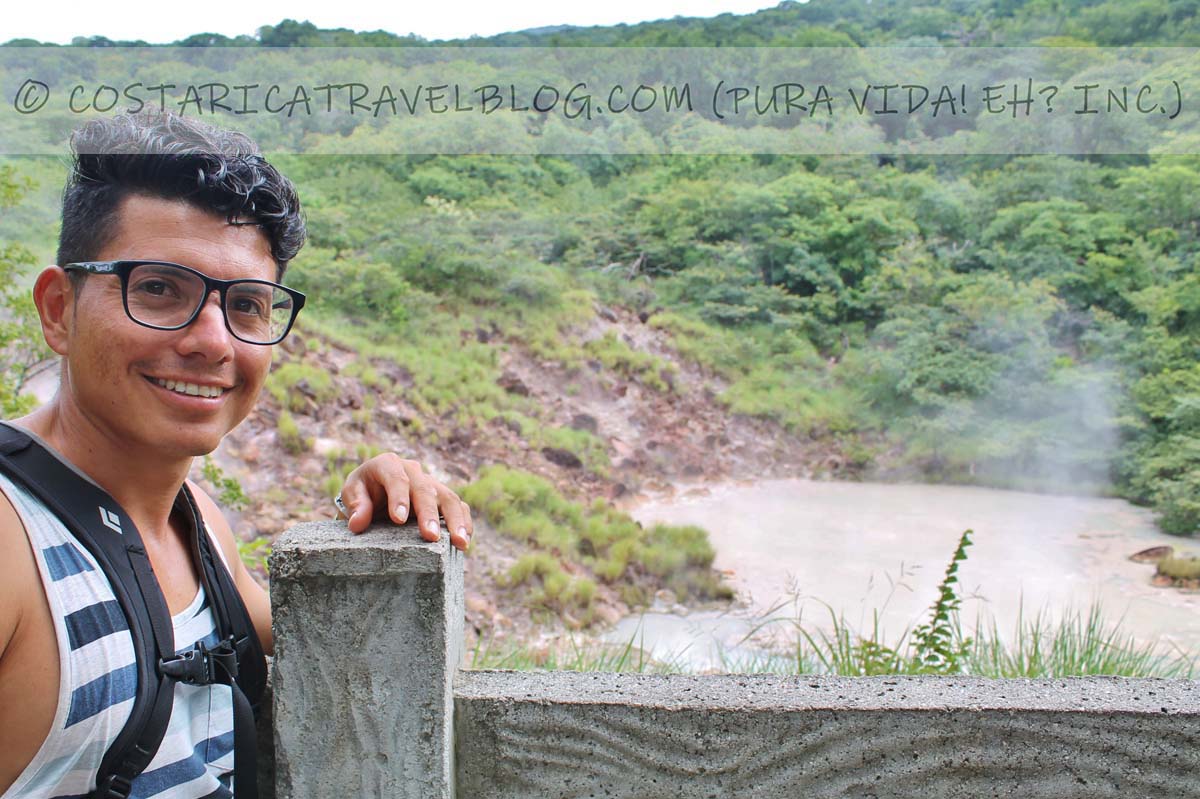

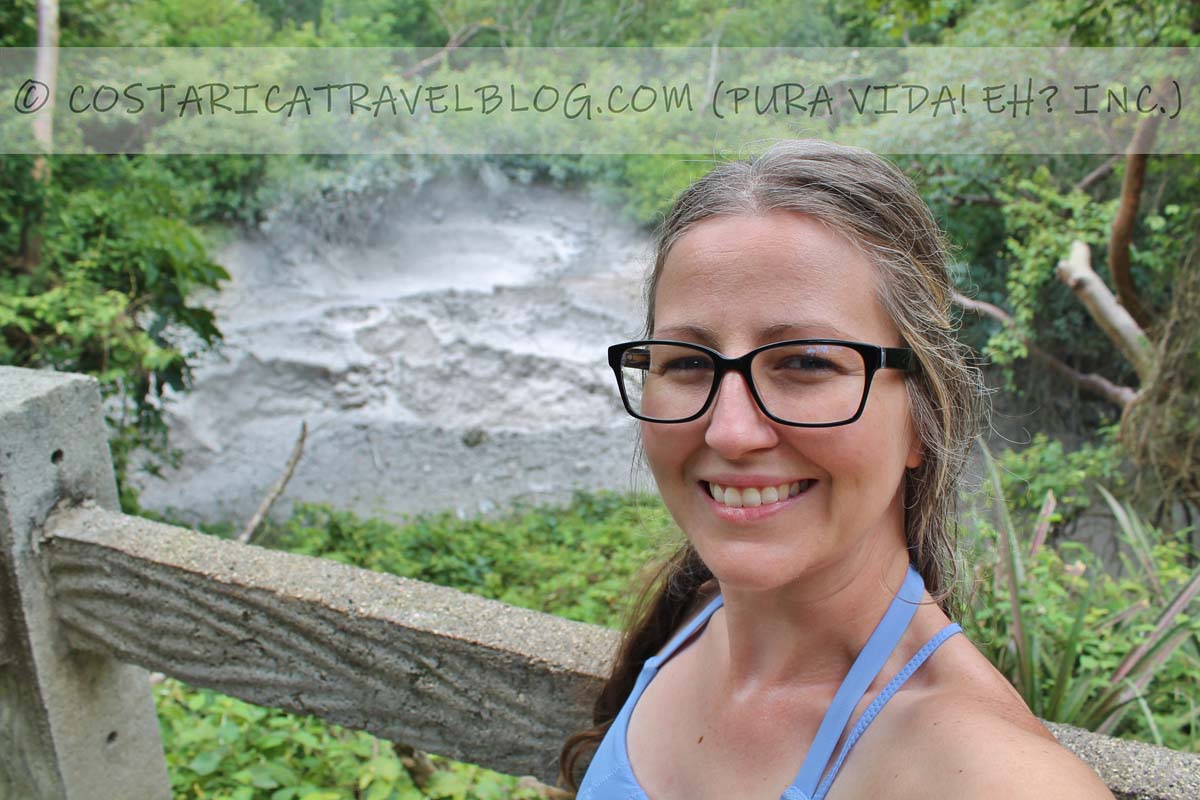
With each passing year, interest in visiting the Rincon de la Vieja Volcano increases, mirroring the growth in popularity of the adventure centers that dot the volcano’s foothills. Fortunately, this volcano still feels off the beaten path despite its path becoming more trodden, mainly because it sits at the end of a long road that cuts through a rural area, and is a 45-minute drive from the nearest city. Because tourism in the Rincon de la Vieja area is understated, this is the best Costa Rica volcano to visit if you want to couple your visit to a volcano with other adventure or nature tours but you’d rather not travel to a busy, highly sought-after destination like La Fortuna. Like visits to the Arenal Volcano near La Fortuna, though, the Rincon de la Vieja Volcano can be experienced in a few different ways. Here are some suggestions:
You can view the Rincon de la Vieja at a distance while:
- Participating in adventure or nature tours run by adventure centers like Hacienda Guachipelin and Buena Vista del Rincon
- Staying at an accommodation in the Rincon de la Vieja area that provides volcano views
- Driving Highway 1 around the city of Liberia
You can hike trails around the foothills of the Rincon de la Vieja Volcano at:
- the Rincon de la Vieja National Park
- Adventure centers like Hacienda Guachipelin and Buena Vista del Rincon
You can combine a guided tour of the Rincon de la Vieja National Park with the following guided experiences:
- Waterfall visits
- Hot spring visits
- Zip-line tours
- Horseback riding tours
- River tubing tours
- Canyoning tours
What’s not permitted at the Rincon de la Vieja Volcano
The Rincon de la Vieja Volcano contains plenty of hidden treasures, including bubbling hot springs and mud pots, and smoking fumaroles. These attractions can be dangerous if you get too close, so you must stay behind the park’s guardrails and not go near the hazards. (Swimming in the hot springs is not permitted.). Also, although years ago it was permitted to hike to the top of the Rincon de la Vieja volcano, the trails that lead the way are currently closed to the public; access is strictly prohibited. This means that it is not currently possible to arrive at and/or see the crater of the Rincon de la Vieja Volcano.
A rundown of the Rincon de la Vieja National Park
- Experience type provided: volcano visit, educational walking/hiking tour
- Location: northeast of Liberia, in a remote location
- Sectors that are open to the public: two; the Pailas Sector and the Santa Maria Sector
- Operating hours: 7:30am to 5:00pm Tuesday to Sunday (the Rincon de la Vieja National Park is closed on Mondays)
- Visit recommended for: individuals of all ages
- Parking: free parking on-site
- Bathrooms: free bathrooms on-site
- Degree of physicality required to visit: low to moderate, depending on the trails that are hiked
- Wheelchair access/suitable for the mobility impaired: only the first few meters of the principal trail in the Pailas Sector are paved
- On-site attractions: waterfalls, good wildlife-watching; an opportunity to see a mini volcano (named Volcancito), hot springs, fumaroles, and mud pots
The average Rincon de la Vieja Volcano experience:
Since it isn’t possible to reach the crater of the Rincon de la Vieja Volcano, most Rincon de la Vieja Volcano tours stick to the volcano’s foothills where flat and hilly trails pass through forest and lead to fascinating attractions and a handful of waterfalls.
Costa Rica Volcanoes: The Irazu Volcano
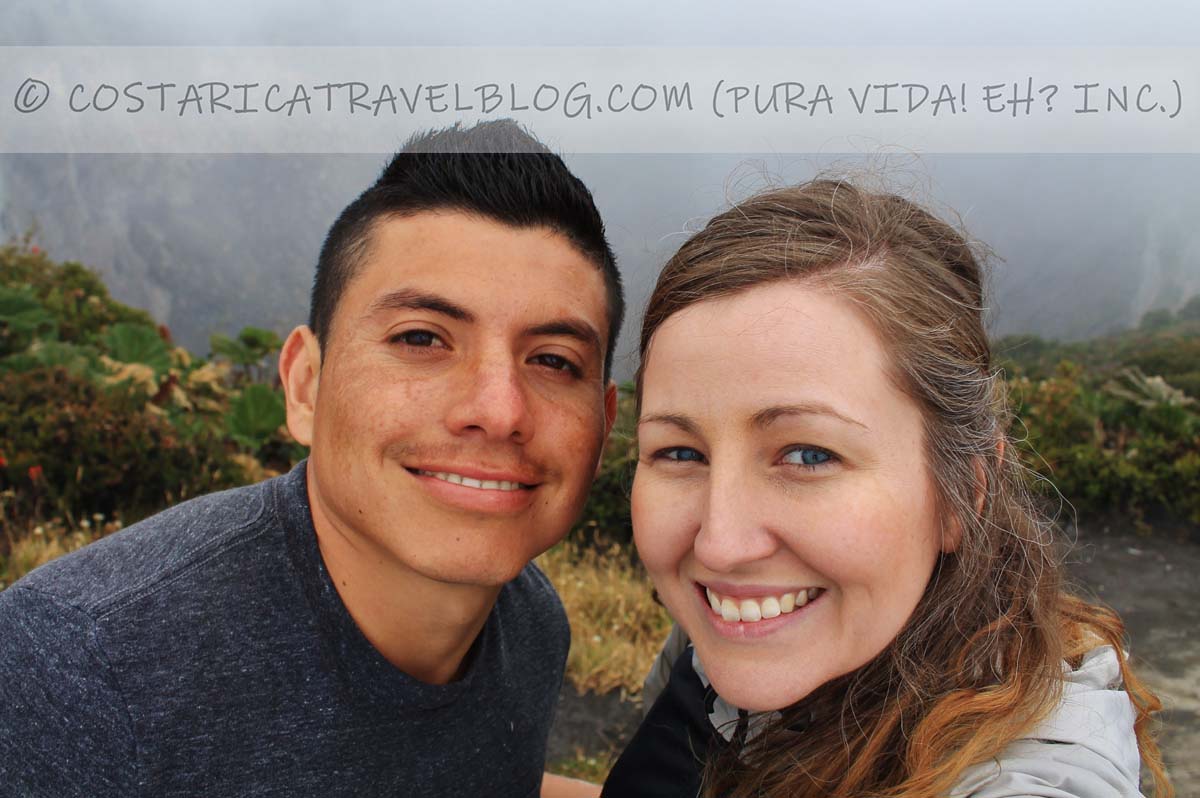
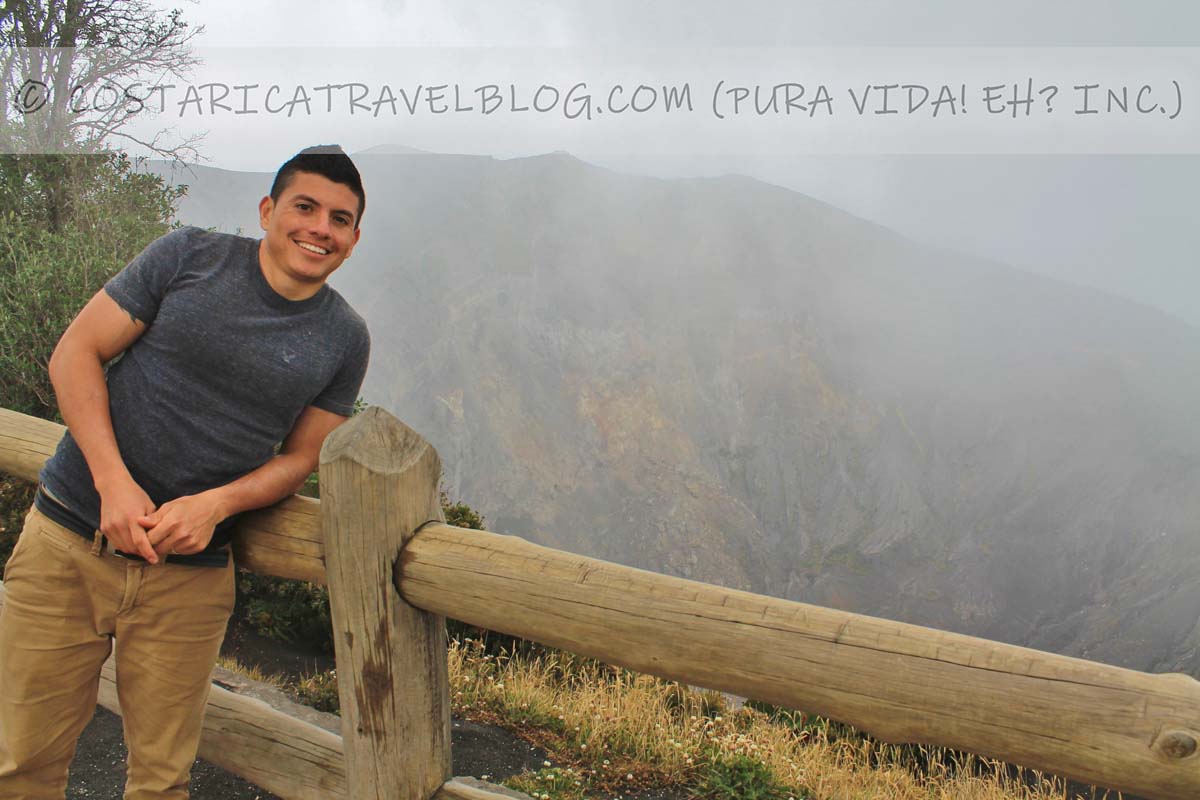
Ways to experience the Irazu Volcano
The Irazu Volcano is one of only two Costa Rica volcanoes that permit visitors to stand at the edge of a crater. (The other is the Poas Volcano.) This is the main reason to visit the Irazu Volcano—Costa Rica’s tallest volcano, which sits 11,000+ feet above sea level (more than double the height of the majestic Arenal Volcano)—to peer into its deep, daunting crater. Fortunately, unlike visits to the Poas Volcano, visits to the Irazu Volcano don’t require a reservation, making this volcano the best Costa Rica volcano to visit if you want to lay your eyes on a crater in a hassle-free way. Though there’s only one way to see the Irazu Volcano’s crater, there are actually two ways you can experience this volcano:
- You can walk the short, wheelchair-accessible trail that leads directly to the volcano’s active crater from just beyond the parking lot
- You can hike less-traveled nature trails elsewhere in the park, though you’ll need to drive to the off-site Prusia Sector for that
A rundown of the Irazu Volcano National Park
- Experience type provided: volcano visit, educational walking tour
- Location: north of downtown Cartago, near Tierra Blanca
- Sectors that are open to the public: two; the Main Sector and the Prusia Sector
- Operating hours: 8:00am to 3:30pm daily
- Visit recommended for: individuals of all ages, especially young children, seniors, and others who would prefer an easy walk
- Parking: free parking on-site
- Bathrooms: free bathrooms on-site
- Degree of physicality required to visit: low
- Wheelchair access/suitable for the mobility impaired: yes
- On-site attractions: crater viewpoint, nature trails
The average Irazu Volcano experience:
The accessible crater atop the Irazu Volcano is the attraction’s best feature. Irazu Volcano tours involve driving up the volcano’s slopes and walking the short, paved trail that connects the parking lot and the crater.
Costa Rica Volcanoes: The Turrialba Volcano


GREAT NEWS! The Turrialba Volcano National Park has reopened following its closure due to volcanic activity. To avoid providing outdated information about the Turrialba Volcano National Park from visits before it closed and reopened, we’ve removed the majority of content from this section. We will be visiting the Turrialba Volcano National Park in the coming months to conduct new research, and after we do, we’ll update this section to share our findings. Pura vida, amigos! 🙂
Which Costa Rica volcano is the best to visit?
When deciding for yourself which Costa Rica volcano is the best to visit, consider our answers below.
- Which Costa Rica volcano is the closest to San Jose/Alajuela/the SJO Airport?
The Poas Volcano, followed by the Irazu Volcano. - Which Costa Rica volcano is the closest to the La Fortuna/Arenal area?
The Arenal Volcano. - Which Costa Rica volcano is the closest to the northern Pacific coast/Guanacaste/Liberia/LIR Airport?
The Rincon de la Vieja Volcano, followed by the Arenal Volcano. - Which Costa Rica volcano provides the best volcano-viewing experience?
The Arenal Volcano, if you want to see a cone-shaped volcano, or else the Poas Volcano or the Irazu Volcano, if you want to see a volcano’s crater. - Which Costa Rica volcanoes provide the best crater-viewing experiences?
The Poas Volcano and the Irazu Volcano. - Which Costa Rica volcano provides the best hiking experience?
The Arenal Volcano, followed by the Rincon de la Vieja Volcano. - Which Costa Rica volcano provides the most rugged, off-the-beaten-path hiking experience?
The Turrialba Volcano, when open to the public. - Which Costa Rica volcanoes are the easiest to walk/hike?
The Poas Volcano and the Irazu Volcano have flat, paved trails. The Arenal Volcano and the Rincon de la Vieja Volcano have some easy forest trails in addition to moderate forest trails. - Which Costa Rica volcanoes provide challenging treks for more experienced hikers?
The Rincon de la Vieja Volcano and the Arenal Volcano. - Which Costa Rica volcanoes are wheelchair accessible/best for the mobility-impaired?
The Poas Volcano and the Irazu Volcano. - Which Costa Rica volcano has hot springs within its national park?
The Rincon de la Vieja Volcano. (Swimming in the park’s hot springs is not permitted.) - Which Costa Rica volcanoes feed hot springs that sit off national park property but can be visited by members of the public for swimming/soaking purposes?
The Arenal Volcano and the Rincon de la Vieja Volcano. - Which Costa Rica volcanoes are most often visited in combination with visits to nearby attractions?
The Arenal Volcano, followed by the Rincon de la Vieja Volcano. Truly, though, visits to any of the five volcanoes described in this article can be combined with visits to nearby attractions. - Which Costa Rica volcano provides an opportunity to view lava?
Currently, no Costa Rica volcanoes emit lava.
QUESTION TO COMMENT ON: Have you visited one of the above-mentioned Costa Rica volcanoes? Which one did you pick, and why?
Pura vida!

Hey, Costa Rica Travel Blog reader, thank you for visiting and reading our blog! We're truly grateful for your time and preference.
Do you know that your spam-free reading experience is most important to us? Unlike some other Costa Rica blogs, we do not to sell your personal information, and we choose not to display ads, sponsored content, or affiliate marketing on our blog so we can keep your visit as distraction- and junk-free as possible. Because we prioritize your privacy, we don't earn money when you visit us, when you sign up for our e-course, or when you click on our links, which means the time and work we put into this blog—including its 300+ articles—is entirely voluntary! If you find our content valuable, and you'd like to thank us for making the trip-planning process easier and your Costa Rica vacation more enjoyable, please consider making a small donation ($1, $2, $3, or an amount of your choosing) to our blog. Doing so is a great way to pat us on the back if you feel we deserve it. 😊 Pura vida, amigos!
Click on the button above to donate through PayPal. (If you cannot see the PayPal button above, click here.) A PayPal account is not required to make a donation; credit and debit cards are also accepted. PayPal donations are confidential; we never see your payment details.
Love our blog? Check out our other Costa Rica-related projects, too:

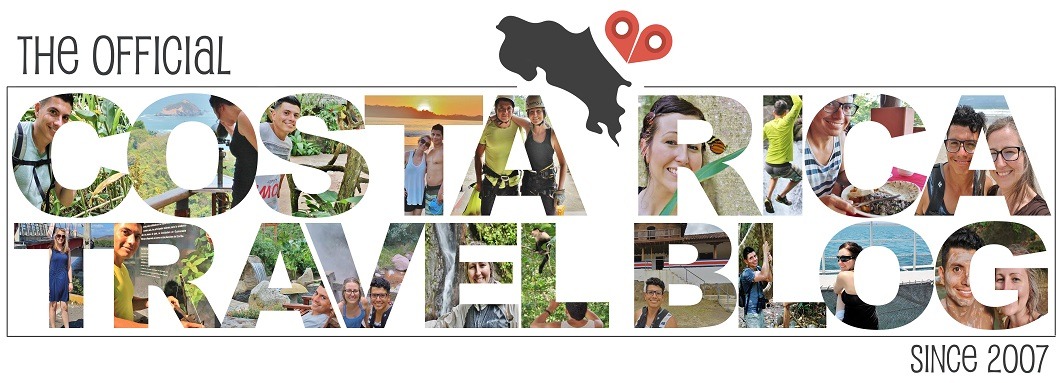

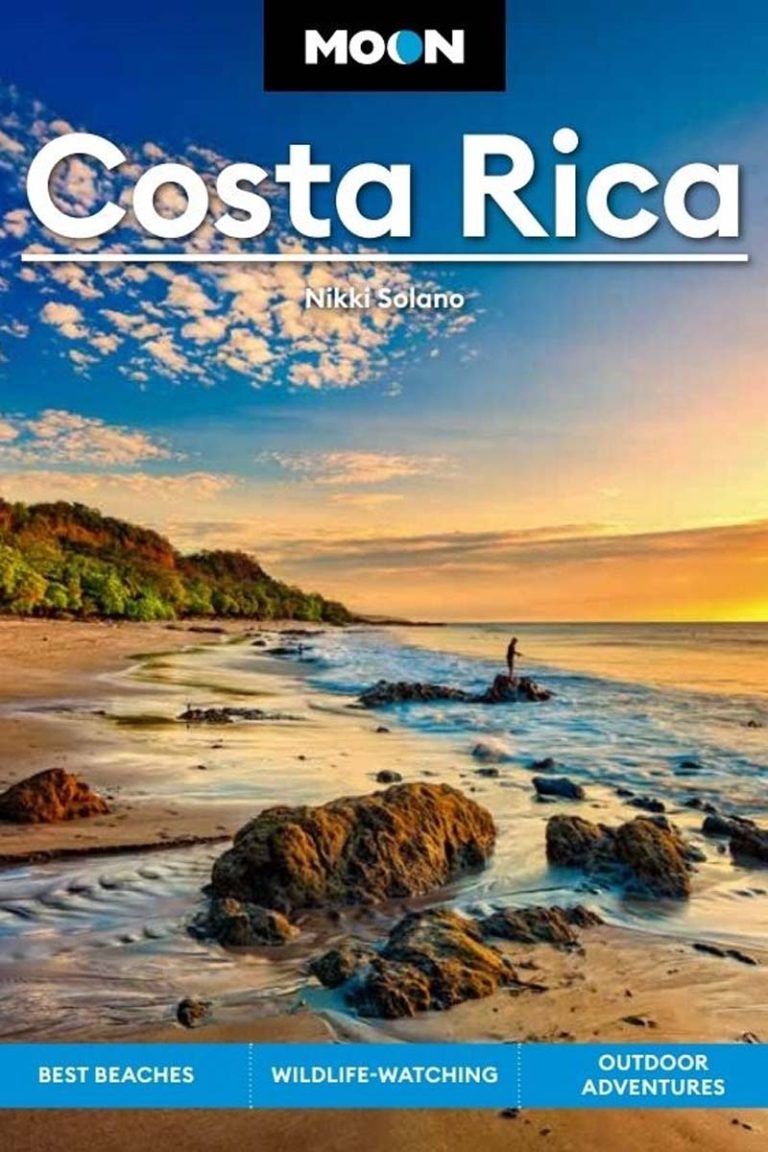
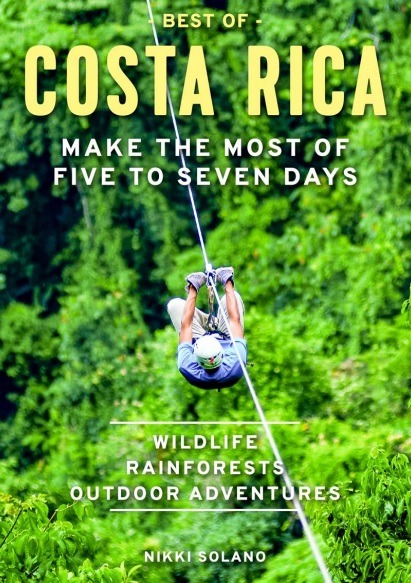

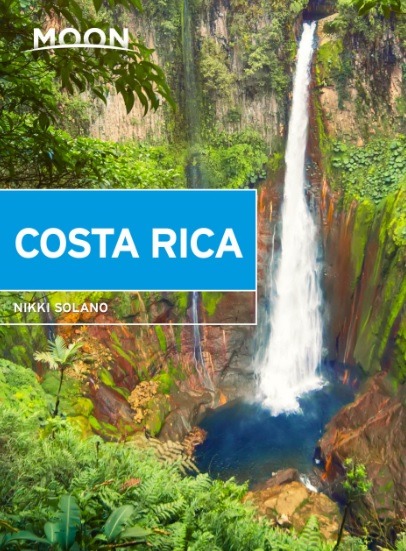












Tagged: adventure, alajuela, arenal, arenal volcano, cartago, costa rica, costa rica travel, costa rica travel tips, costa rica vacation, guanacaste, irazu volcano, la fortuna, poas volcano, rincon de la vieja, rincon de la vieja volcano, tourism, travel, travel tips, turrialba, turrialba volcano, vacation, volcano